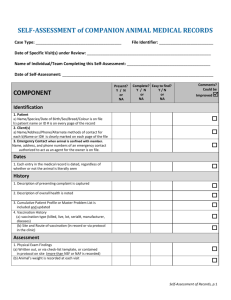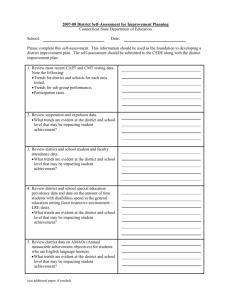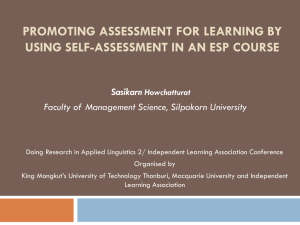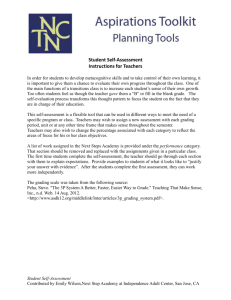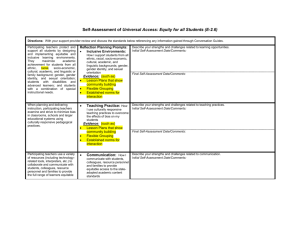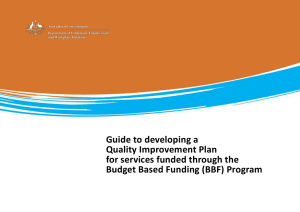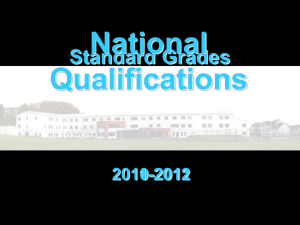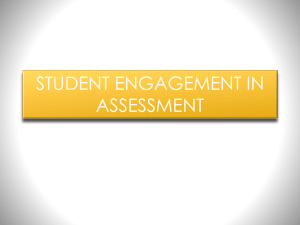3. The Quality Improvement Plan
advertisement
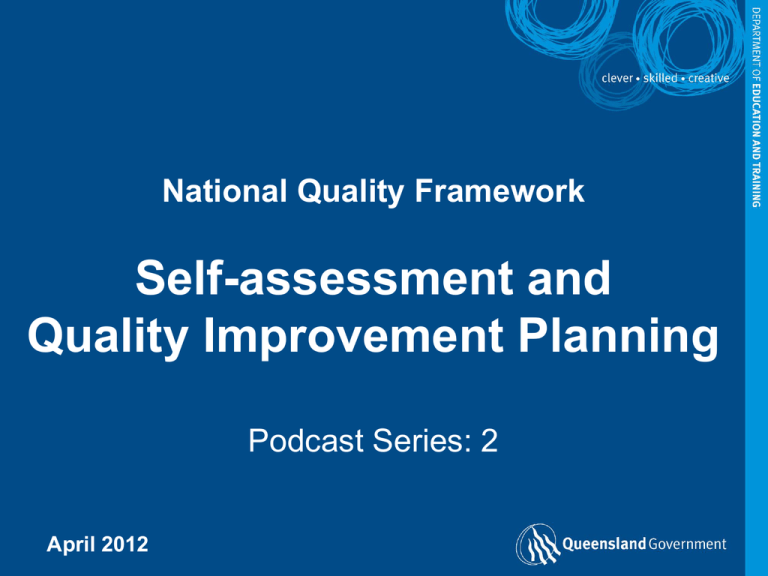
National Quality Framework Self-assessment and Quality Improvement Planning Podcast Series: 2 April 2012 Presentation overview 1. 2. 3. Introduction Reflection, self assessment and quality improvement planning The Quality Improvement Plan http://deta.qld.gov.au / earlychildhood / office / national / podcast.html 1. Introduction One of the key objectives of the National Quality Framework (NQF) is: • to promote continuous improvement in the provision of quality education and care services 1. Introduction The introduction of changes associated with the quality reform agenda offers an opportunity to stop, reflect and rethink what we do and why we do things in particular ways. (Early Childhood Australia, Professional Learning Program) 1. Introduction Under the NQF, education and care services are required to: 1. Assess their own practices against the National Quality Standard (NQS) and National Regulations 2. Identify their strengths and areas for continuing improvement 3. Develop a Quality Improvement Plan that prioritises areas for improvement. Reflection, self-assessment and improvement planning 2. Self-assessment and planning Before you begin: • Become familiar with the 7 Quality Areas of the NQS and the related regulatory requirements • The NQS can be found in Schedule 1 (page 325) of the National Regulations • Refer to the Guide to the NQS 2. Self-assessment and planning The Guide to the National Quality Standard includes a set of reflective questions for each Quality Area that serve as prompts to: • explore actual practice at the service • determine the effectiveness of practice for all children and families • determine relevance of the practice to the service and its stakeholders • consider equity and fairness for all children, families and educators. 2. Self-assessment and planning Learning Framework Principle: Ongoing learning and reflective practice • What are my understandings of each child? • What theories, philosophies and understandings shape and assist my work? • Who is advantaged when I work in this way? Who is disadvantaged? • What am I challenged by? What am I curious about? • What aspects of my work are not helped by the theories and guidance that I usually draw on to make sense of what I do? • Are there other theories or knowledge that could help me to understand better what I have observed or experienced? 2. Self-assessment and planning Conducting your self-assessment and improvement planning 1. Critically examine service practice - question how and why certain practices occur 2. Identify the service’s particular strengths and practices that can or should improve 3. Document your self assessment to inform quality improvement planning The Quality Improvement Plan A requirement of the National Regulations 3. The Quality Improvement Plan Continuous improvement: Quality Area 7 of the NQS 7 LEADERSHIP AND SERVICE MANAGEMENT 7.2 There is a commitment to continuous improvement. 7.2.1 A statement of philosophy is developed and guides all aspects of the service’s operations. 7.2.2 The performance of educators, co-ordinators and staff members is evaluated and individual development plans are in place to support performance improvement. 7.2.3 An effective self-assessment and quality improvement process is in place. 3. The Quality Improvement Plan The Quality Improvement Plan is required to: • • • • • Be informed by an assessment of the quality of practice Identify areas for improvement Contain a statement of philosophy of the service Be updated at least annually Be available at the service for parents and the Regulatory Authority (DETE) • Be submitted to the Regulatory Authority (6 weeks following notification of assessment and rating visit and on request) • Be revised following the assessment and rating process (if required) 3. The Quality Improvement Plan Timing: Services licensed / approved prior to 1 January 2012: • Must prepare their Plan by 30 April 2012 • Available on request by Regulatory Authority or parents New services approved between 1 January 2012 – 31 January 2012: • Must submit their Plan by 30 April 2012 New services approved on/after 1 February 2012: • Must submit their Plan within three months of grant of service approval. 3. The Quality Improvement Plan Quality Improvement Plan template • A template is available online from ACECQA • It is planned that in future, services will be able to complete the template online and upload when it is requested by the Regulatory Authority 3. The Quality Improvement Plan Quality Improvement Plan template includes: • Service details • Statement of philosophy And for each of the seven Quality Areas: • Summary of strengths • Summary of each identified issue • Key improvements sought for each identified issue 3. The Quality Improvement Plan The statement of philosophy of the service • is unique to the service – different settings have different priorities, and different families, children, educators and staff • outlines the principles under which the service operates • promotes shared understandings of these principles • guides all aspects of the service’s operation including the development of educational program and practice • forms part of a culture of evaluation, self-review and improvement • is reviewed at least annually, and revised if necessary • reflects the principles of the NQF and approved Learning Frameworks 3. The Quality Improvement Plan Principles of Learning Frameworks • • • • • Respectful relationships Partnerships with families High expectations and equity Respect for diversity Reflective practice National Quality Framework • • • • • • The rights and best interests of the child are paramount Children are successful, competent and capable learners Equity, inclusion and diversity Valuing Australia's Aboriginal and Torres Strait Islander cultures The role of parents and families is respected and supported High expectations for children, educators and service providers 3. The Quality Improvement Plan Principles inform philosophy • How do the principles and practices of the Learning Frameworks align with the principles and practices at your service? • Some ideas will be consistent with your practices and knowledge, and some will be challenging, new… 3. The Quality Improvement Plan Summary of strengths and issues identified during self-assessment 3. The Quality Improvement Plan Developing the Quality Improvement Plan For each Quality Area, space is provided to record: • The relevant standard or element (e.g. Standard 1.1, element 1.2.3) • Priority for action – Low, Medium or High • Steps for getting the outcome – the actions that will be taken • What the measure of success will be • When the outcome is intended to be achieved • Notes on progress, what has been done so far 3. The Quality Improvement Plan Quality Improvement Plan: example 3. The Quality Improvement Plan Revisiting and refreshing the Plan: • At least annually • At any time when directed by the Regulatory Authority • Triggered by suggestions made in the Assessment and Rating report • As different issues or new understandings arise • When new children and families join the service • As a result of staffing or management changes Thank you Subscribe to A-Z of Early Childhood for important updates: http://deta.qld.gov.au / earlychildhood / office / subscribe.html
